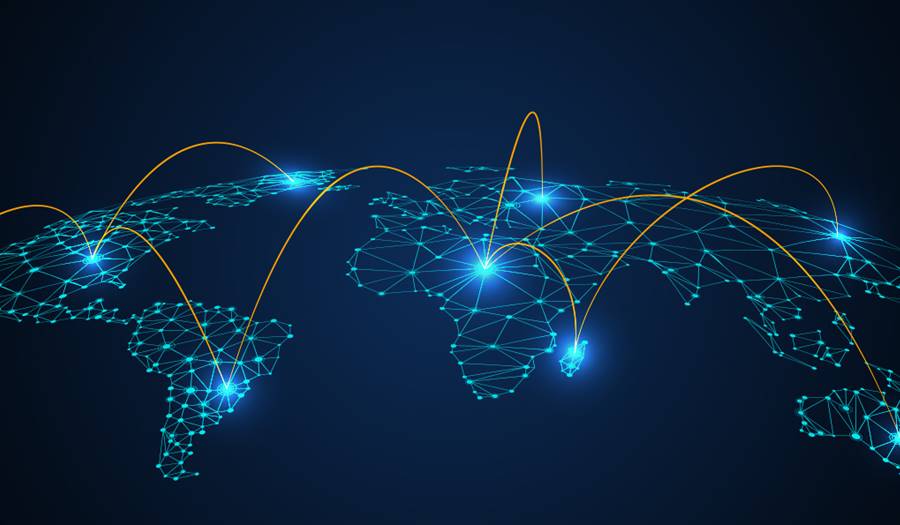
Globalization after COVID
5/18/2020
A Reflection on Historical Precedent
In 2001, the schedule 1 euphoria and massive investment in internet-based technology, media, and telecom looked crazed and unexplained. Collapse killed off most of the mistakes—and those who made them—leaving a stronger and more mature group of firms and investors. Unicorns exist. Many start ups fail. But, private equity firms and invested firms are more stringent in their corporate governance and capital allocation.
In 2008, the concentration of financial capital in sub-prime mortgages seemed reckless and insipid. The market seizure caused mayhem, but thanks to a bazooka, stress tests, mergers, and oversight, the survivors are much stronger. Sub-prime still exists. Banks still take risks. But, the costs match. There is more prudent capital allocation—the financial industry loan book is more diversified—and there is better corporate governance.
Systemic Risk 2020: Imbalanced Supply Chains
Now, in 2020, the reliance of supply and value chains on one country or one geography appears misplaced. The COVID-19 series of shutdowns has exposed the cost of logistical clustering.
Just as bank boards did not know what was on their balance sheets in 2008, boards have no idea what total exposure their supply lines have to China and Asia. What looked like a great idea (offshoring more and more to China and to Asia) now looks anything but far-sighted.
Yes, offshoring began as seemingly good corporate governance and capital allocation. Despite the risks, it created a lot of value by utilizing a large pool of lower-cost, hard-working, unskilled, and skilled labor. It gave firms a foothold in a massive market with no unions and no onerous regulations. The Chinese government provided a pro-investment environment, despite turning a blind eye to intellectual property theft (Note: Napster was American). Investment in China and in South East Asia was necessary to compete. Like to a drug of choice, most firms have been addicted.
On a macro basis, many countries may have lost jobs, but they gave up high inflation too. As factories went from America, Western Europe, Japan, and Korea to Taiwan and then to China, products came back cheaper. Lower inflation allowed for lower interest rates and greater growth. Everyone benefited.
But, with all factories and subcontractors in the same place, the virus in Wuhan revealed the serious flaw in monopolizing manufacturing in China. Just as the banking system in 2008 was over-exposed to mortgages, the supply chain is over-influenced by China. The cost of capital is thus much higher than perceived. Good corporate governance and capital allocation must now incorporate this.
As COVID-19 went from epidemic to pandemic, the monopoly in medicine and medical gear manufacturing looked like malpractice. Nothing is more strategic than food and medicine. Yet, neither America nor the EU noticed this potentially existential weakness. China identified the problem first—when they could not secure medical gear “made in China” during their national shutdown. Nobel Laureate Gary Becker proved that discrimination hurts the discriminator. In this case, the “factory of the world” was hurt when it was closed.
Stress Testing and Right Sizing Geographic Risk
As shutdowns conclude and companies revive, they must rethink and reconfigure their value chains, investing in a more diversified portfolio of geographies, possibly limiting country (and even regional) exposure to 10-15 percent, with perhaps a bit more in their home markets. The capital investment will be in the hundreds of billions. But, this is a chance to restructure operations.
If companies do nothing, Congress and the EU may mandate change. Sarbanes–Oxley tamed fraudulent accounting after 2001. TARP and the Basel Committee on Banking Regulations required more risk capital from banks after 2008. Equivalent laws from Congress and the EU Commission, possibly linked to bailouts, may demand a restructuring of supply chains away from China—and even Asia—for all goods and services sold in the US and EU respectively.
China will certainly reconfigure its economy away from exports and probably the location of manufacturing within China to reduce the risk within its borders.
Other countries should embrace a great opportunity to win investment. Those with good business governance like Ghana, Botswana, and Rwanda in Africa; Chile in South America; the UAE and Qatar in the Gulf; and Singapore in Asia should benefit. Others should consider creating free-trade zones that meet the “Ease of Doing Business” Criteria.
A New World Order
This depression in output will end. The business landscape will look different a few years out, as it did after 2001 and 2008. Some companies will still manufacture in China, but supply chains and operations will be more globally diverse. Citizens must view the process as fair. The Fed and the Treasury have the responsibility to creatively price the capital so ultimately it is the taxpayers who see themselves as the ones rewarded.